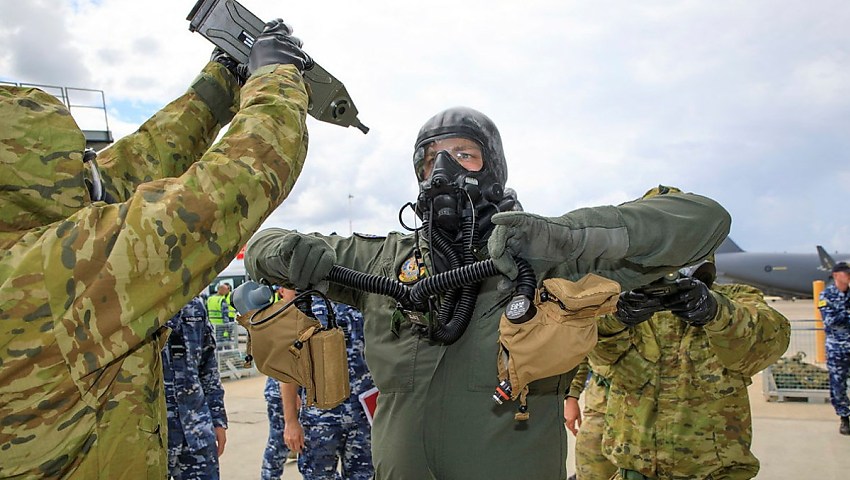Pilots have carried out training to shore up their response to a chemical attack.
To continue reading the rest of this article, please log in.
Create free account to get unlimited news articles and more!
Combat Support Group aviators from the Royal Australian Air Force (RAAF) have taken part in Exercise Toxic Gauntlet — a training activity simulating a chemical attack, requiring personnel to relocate to a decontamination area to be processed.
The exercise, conducted over two sites at RAAF Base Amberley in November, is to continue development of their chemical, biological, radiological and nuclear (CBRN) defence capability during Exercise Toxic Gauntlet.
The training, conducted over two sites at RAAF Base Amberley, involved testing “survive surprise” capability by putting aviators through either a basic course or conversion training.
Participants leveraged equipment supplied under the Commonwealth government’s LAND 2110 project, wearing and operating protective equipment built to withstand a chemical, biological, radiological and nuclear attack.
The exercise also involved testing survey, air movement, explosive ordnance demolition and decontamination.
After completing a four-step decontamination simulation, participants stepped into a decontamination zone.
Aircraftman Sam Schmidt from No. 382 Squadron said the exercise would support the evolution of CBRN defence capability.
“It’s great to be part of an exercise where I can help with the development of the standard operating procedures and processes,” AC Schmidt said.
“This training makes me more confident moving into areas that would be hazardous to someone without protective equipment and gives us the ability to take people out of a chemical, biological, radiological and nuclear situation and treat them safely.”
Squadron Leader Troy Myers, Exercise Officer in Charge from Headquarters Combat Support Group Capability Development, lauded the efforts of Combat Support Group.
“The training was important for Defence’s ability to ‘survive to manoeuvre’ in a chemical, biological, radiological and nuclear defence environment,” SQNLDR Myers said.
“The exercise has been successful, with lessons learnt that everyone has adapted to, this training takes our aviators to the next level with an enhanced skill set of decontamination and survey skills.”
[Related: Indo-Pacific Endeavour 22 wraps up, HMAS Adelaide returns to Top End ]

 Login
Login







